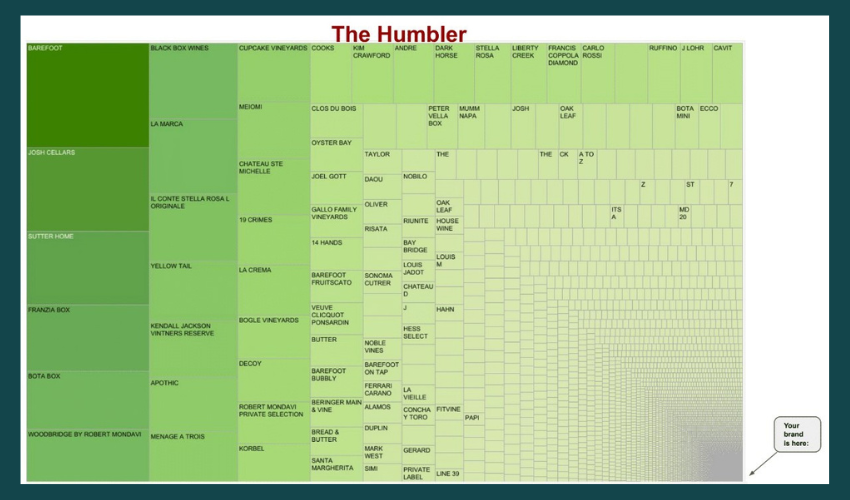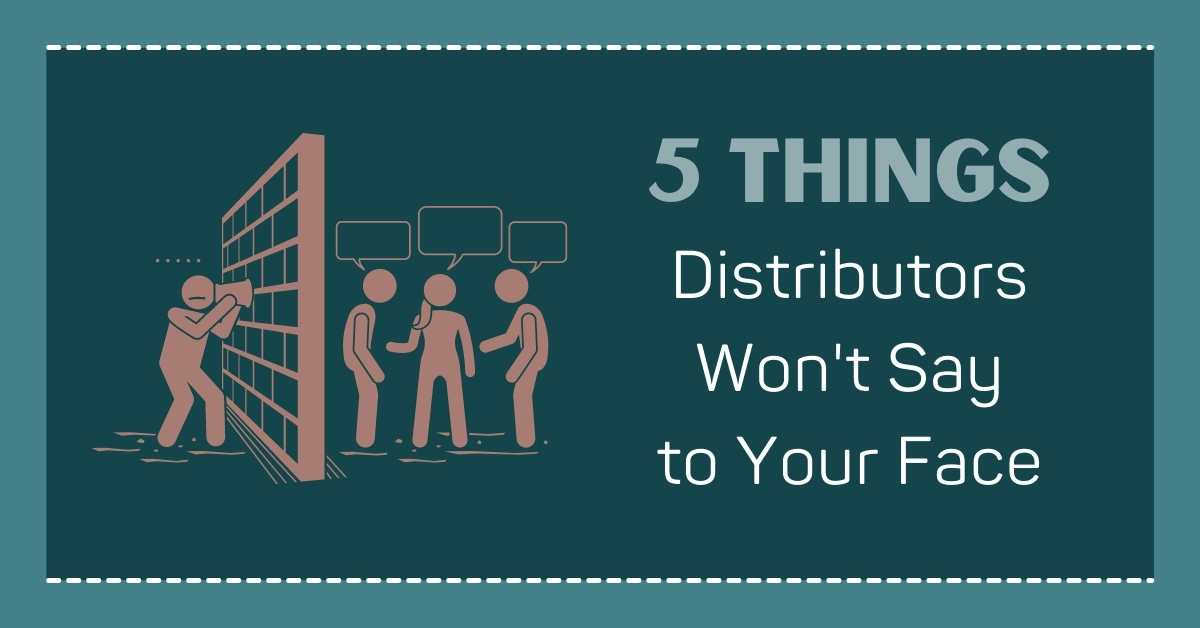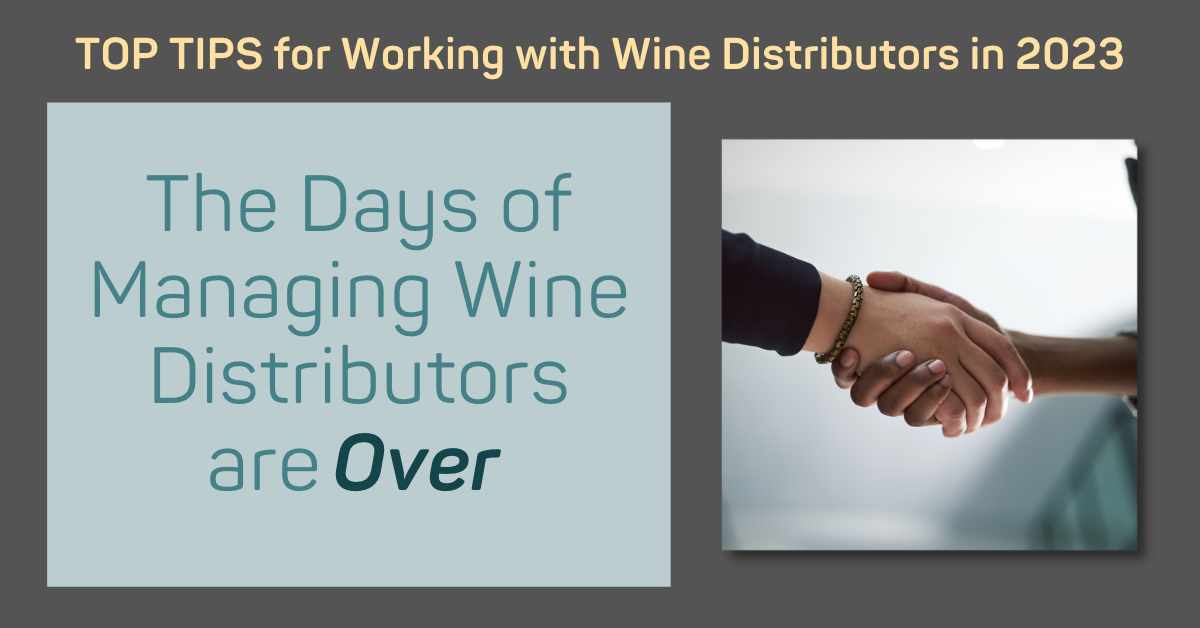5 Things Distributors Won't Say to Your Face
The times have changed in the wine and spirits industry and so should YOU. The capabilities of wine & spirits distributors have changed so much in...
5 min read
 Ben Salisbury
:
11/3/23 5:38 PM
Ben Salisbury
:
11/3/23 5:38 PM
Today I will say what most distributors will not come out and say to their suppliers. “Your definition of ‘partnering’ and ours are completely different.”
The capabilities of distributors of all sizes have been severely diminished due to the unprecedented proliferation of new brands in just the last six years, combined with the ever-shrinking pool of distributors.
 Person standing alone in a crowd of people. (This image was generated by AI.)
Person standing alone in a crowd of people. (This image was generated by AI.)
Given this new reality of too many brands and too few distributors, suppliers everywhere should make the appropriate adjustments. Some have, but most absolutely have not.
So, for the unenlightened, asleep-at-the-wheel suppliers among us, and as a courtesy to wine & spirits wholesalers everywhere, allow me to spell out the NEW RULES for partnering with distributors.
The problem, as I see it, most suppliers are living in the past. They still think it’s possible to “partner” with a distributor in such a way that they go out and build new points of distribution for them.
The problem is that this USED to be possible but is no longer possible. It’s simple math. And physics.
Consider this graph from Fintech brilliantly called “The Humbler.” If your brand does not appear in writing in one of the squares below, “partnering” with a distributor should have a completely different meaning for you.
 Illustration from Fintech showing the proportional size of wine brands in the USA.
Illustration from Fintech showing the proportional size of wine brands in the USA.
It is just not physically possible for distributors to take your “goals” and run out and execute them for you.
The days of “holding distributors accountable for results” are long gone! If you’ve been “managing distributors” for ten years or more, you remember when it WAS possible to expect distributors to distribute.
Firstly, is to hold 30 days' worth of inventory of your products in their warehouse. This means 30 days based on actual depletion trends not 30 days based on your“goals.” In fact, the word “goals” needs a closer look. These are your goals to make, not the distributors'. More on this in a minute.
Secondly, distributors can and should provide accurate delivery to the accounts that you and your team have sold to.
Thirdly, you can reasonably expect distributors to at least match your efforts in the marketplace.
Any expectation suppliers hold beyond these three things exists outside of reality (see point #1 above).
Suppliers hear me, please! It’s up to YOU to create key account target lists. It’s up to YOU to do the market research to ensure your brands are well-positioned for success. It’s up to YOU to ensure your pricing is organized and competitive. It’s up to YOU to know the nuances of each market and how things work for each state (because they are all different). Any goals you have are YOUR goals to achieve.
Do you want to double your sales in 2024? No problem! But you’ll have to take responsibility for these outcomes.
What does it matter if the overall wine market is flat or slightly down? If your ACV is low, then you can (potentially) achieve the growth you want by expanding your distribution. If your brand(s) truly fill a need in the market
Distributors spend a lot of time and energy trying to tamp down suppliers’ expectations of what’s achievable. But, these conversations only happen when the supplier confuses their goals with the distributors’ goals.
Maybe this is a good place to explain what the distributors’ goals are:
This is a tough one for most suppliers to grasp. Up until six years ago, relationships did matter. They were enough.
If a supplier was considering one sales hire over another in the hiring process, existing relationships with distributor principals carried a lot of weight. Not so much nowadays.
No amount of lunches, dinners, or golf games will change the fact that distributors small, medium, and large are completely overwhelmed.
If you really want to "partner" with a distributor, stop asking for so many meetings!
You can “communicate” your guidelines and expectations until you are blue in the face. It won’t matter one blip. You see, the problem isn’t one of good/poor communication. We’re not dealing with a lack of understanding. We’re dealing with diminished capabilities (see the intro paragraph above).
So keep your trackers where they belong: on your desk, not theirs.
Stop and look closely at what the large, national distributors are up to in the digital realm. This is serious for them and, it needs to be serious for suppliers too.
What exactly am I talking about here?
I just might be pissing into the wind on this one because the desire to maintain the status quo is so strong. But, I will nevertheless explain what I mean here.
There was a time when more states meant more sales. Back when there were far fewer brands and far more distributors.
You shouldn’t even be IN a state unless you are committed to putting a salesperson on the ground in that state to build new distribution (see Rules #2 and #3 above).
Under no circumstances should a supplier enter a new state with the expectation that your distributor in that state will go out and build a new distribution for you. Thinking otherwise is an egregious and delusional separation from reality! Accept it. Adjust to it!
Launching a new brand in today’s hyper-competitive market requires a deep dive into your respective category. Is there enough demand for your product? Is the category growing? Do you know who your ideal customer is and what they want? Have YOU identified the true gaps in the market?
At a minimum, you need a reason for being AND a well-conceived strategy and plan to gain market share. No easy task! But this is YOUR task, not the distributors’.
Do you want to know why it's so dang hard to gain access to a new distributor? Because they’ve seen it all already! They’ve sat through countless meetings with a prospective supplier who prattles on about the attributes of their product (how it was made, how it tastes, etc) erroneously thinking this is the key to brand-building success.
The TRUTH is your product is not so distinct and unique that a restaurant or retailer needs to carry it. You’d better have something better than that to bring to the table!
Now this IS something distributors try to tell their prospective suppliers but they don’t listen. They are too in love with their own creations.
Just about every job posting I see on Winejobs.com or BevForce has a section in the job description about “managing” distributors.
First off, if I were a salesperson looking for a job, I would never go to work for such a supplier because their outdated expectations are setting me up for failure! The days of managing distributors are long gone!
Here are the criteria you should be looking for:
Do they know how to leverage their time and activity for maximum effectiveness (the 80/20 rule)?
If you’re not familiar with this fable by Hans Christian Anderson, the idea is that we have a situation here where suppliers and distributors alike are afraid to criticize the “conventional wisdom.”
If this article has in some way helped you to see that the emperor truly has no clothes, then I have delivered on my purpose for writing it.
Times have changed and so must all suppliers. The distributors have already made their adjustments. Do you care to join them in reality?

The times have changed in the wine and spirits industry and so should YOU. The capabilities of wine & spirits distributors have changed so much in...

Working with wine and spirits distributors has admittedly gotten more complex in recent years.

It has always been amusing to see how much time and effort salespeople put into sellingso fewcases.